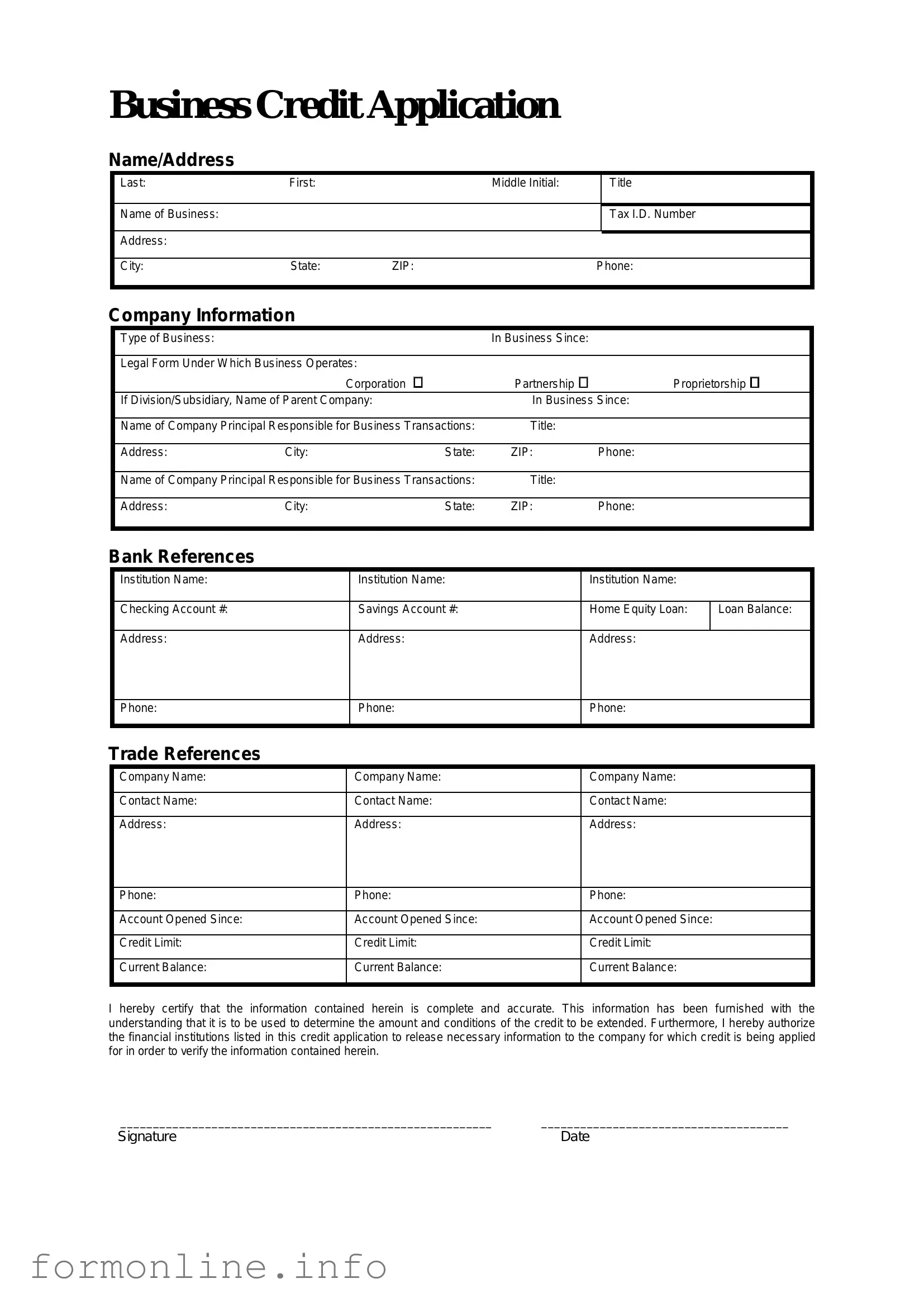The Business Loan Application is similar to the Business Credit Application form in that both documents are used to assess a business's financial health and creditworthiness. A business loan application typically requests detailed information about the company's financial statements, credit history, and future projections. This information helps lenders determine whether to approve the loan and under what terms, much like how a credit application evaluates the risk of extending credit to a business.
The Vendor Credit Application serves a similar purpose by allowing suppliers to evaluate a business's creditworthiness before extending trade credit. This document usually requires information about the business's ownership, financial status, and payment history with other vendors. Both applications aim to mitigate risk for the creditor by gathering essential financial information about the applicant.
The Personal Guarantee form, while focused on individual credit, shares similarities with the Business Credit Application in that it often requires personal financial information from business owners. This document is typically signed by owners to guarantee the business's debts. Just as the Business Credit Application assesses the company’s ability to repay, the Personal Guarantee evaluates the owner's financial stability and commitment to the business's obligations.
The Business Financial Statement is another document that parallels the Business Credit Application. This statement provides a snapshot of the business's financial position, including assets, liabilities, and equity. Lenders and creditors use this information to gauge the company's overall financial health, similar to how they would analyze the data provided in a credit application.
The Trade Reference Request form is also akin to the Business Credit Application. This document seeks information from other businesses about the applicant's payment history and reliability. By gathering references, creditors can assess the applicant's creditworthiness and payment behavior, much like the evaluations made in a credit application.
The Credit Report, while not a form completed by the business, is essential in the credit evaluation process. It provides a comprehensive view of a business's credit history, including past loans, payment patterns, and outstanding debts. Creditors often rely on this report alongside the Business Credit Application to make informed decisions about extending credit.
In addition to these various forms, employers often need to verify previous employment when assessing candidates. This is where the Employment Verification form comes into play, serving as a vital tool to confirm job history and qualifications. To learn more about how to effectively implement this process, you can refer to Top Forms Online, which provides resources that simplify understanding the requirements and procedures associated with employment verification.
The Business Plan can also be compared to the Business Credit Application. A well-prepared business plan outlines the company's goals, strategies, and financial projections. Lenders may request a business plan to understand the applicant's vision and how they plan to manage their finances, which complements the information gathered in a credit application.
Lastly, the Partnership Agreement may relate to the Business Credit Application in scenarios where multiple owners are involved. This document outlines the roles, responsibilities, and financial commitments of each partner. Creditors may review this agreement to assess the stability and structure of the business, similar to how they evaluate the credit application for risk assessment.

